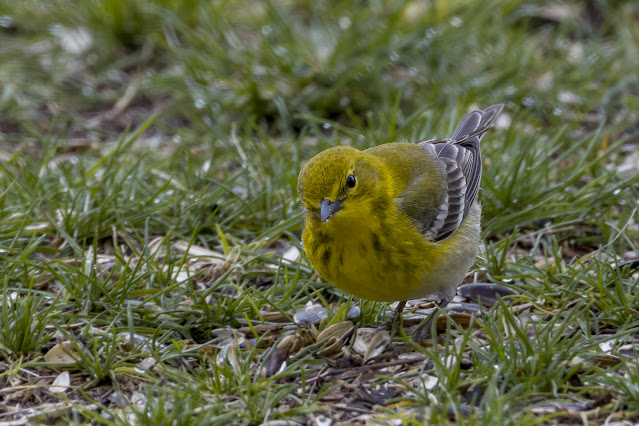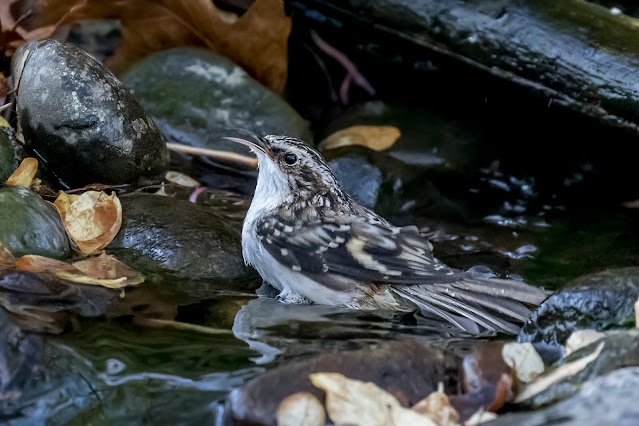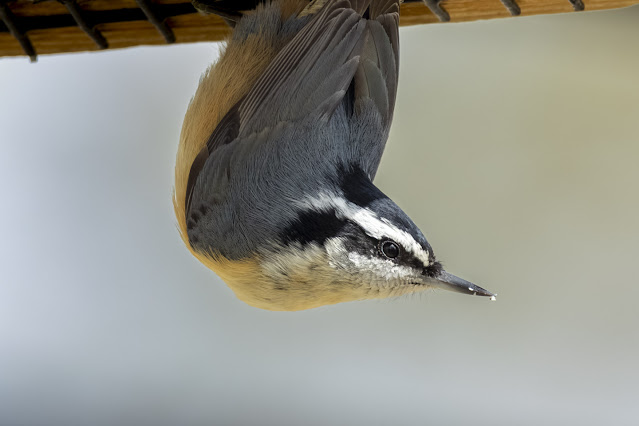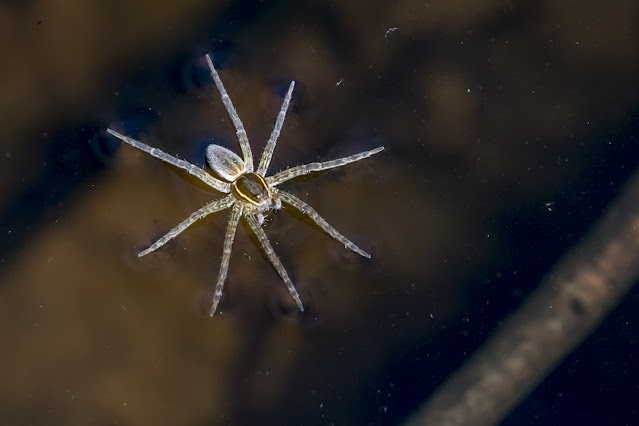Ruby-crowned kinglet, Rondeau Provincial Park, April 26, 2023. A regular visitor to the yard and water feature. Not sure how it lost the feathers at the edge of its bill. Corthylio calendula. This tiny bird is often hard to see in summer, when it lives high in tall conifers. In migration and winter, however, it often flits about low in woods and thickets, flicking its wings nervously as it approaches the observer. When it is truly excited (by a potential mate, rival, or predator), the male may erect his ruby-red crown feathers, hidden at other times. The song of the Ruby-crown is jumbled and loud, all out of proportion to the size of the bird. source - Audubon-org


















